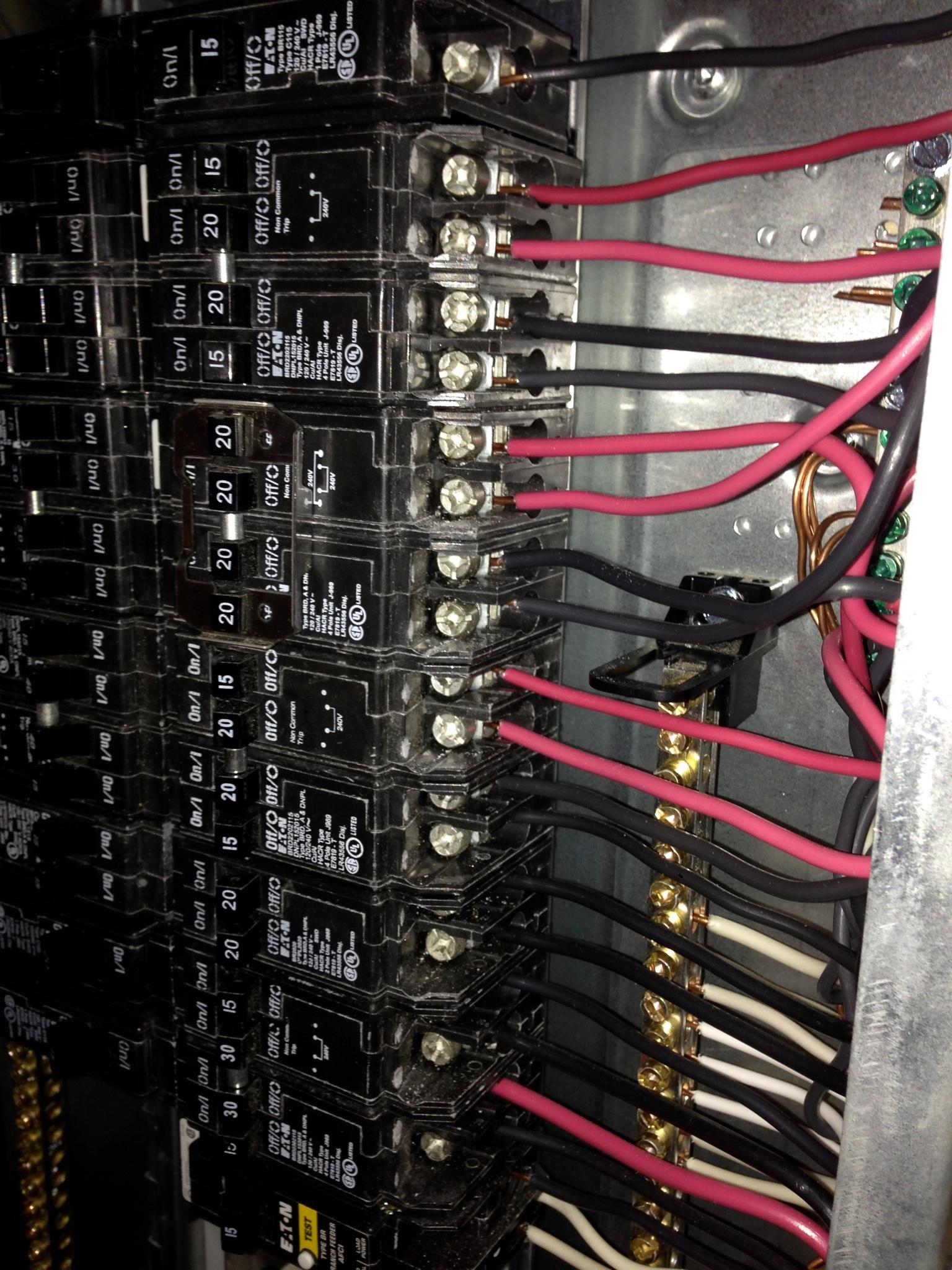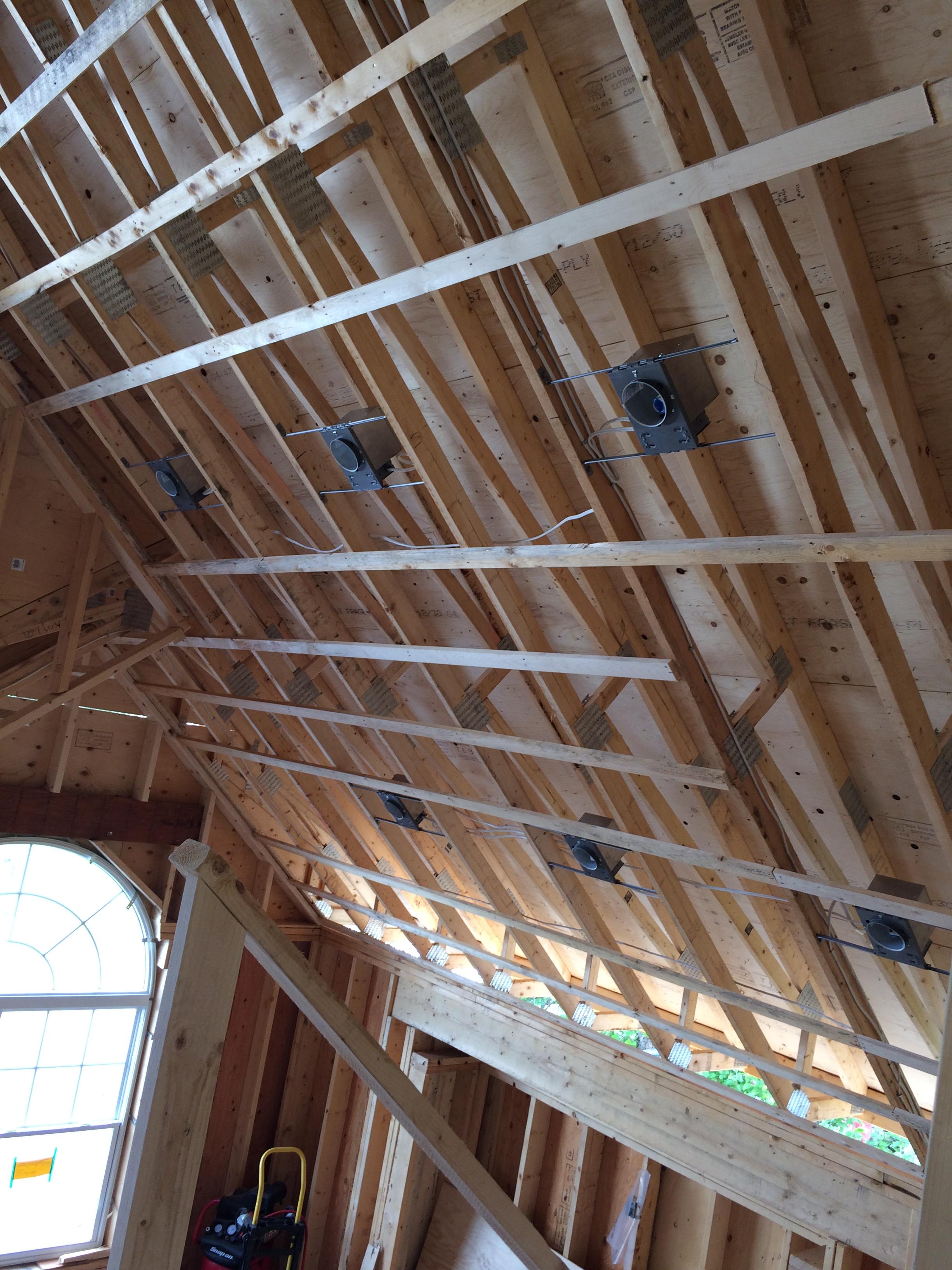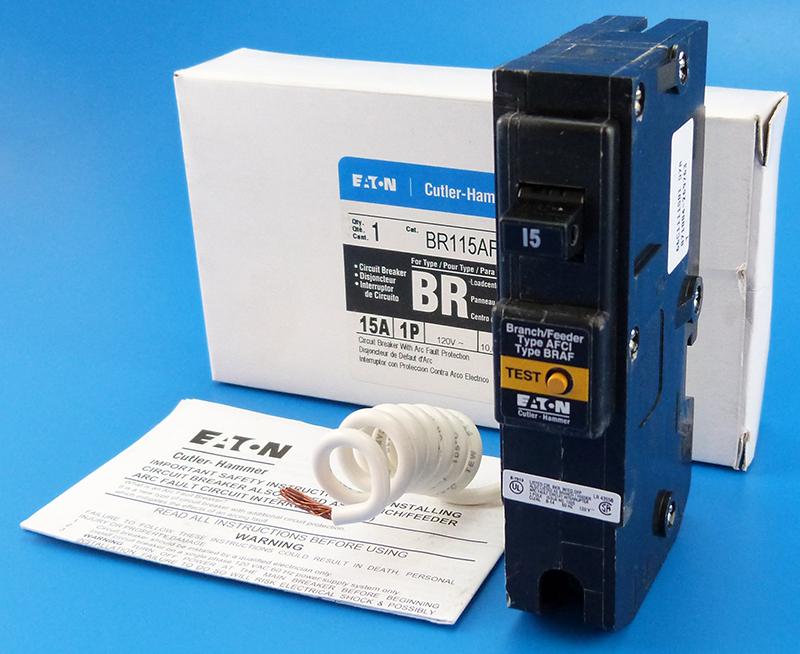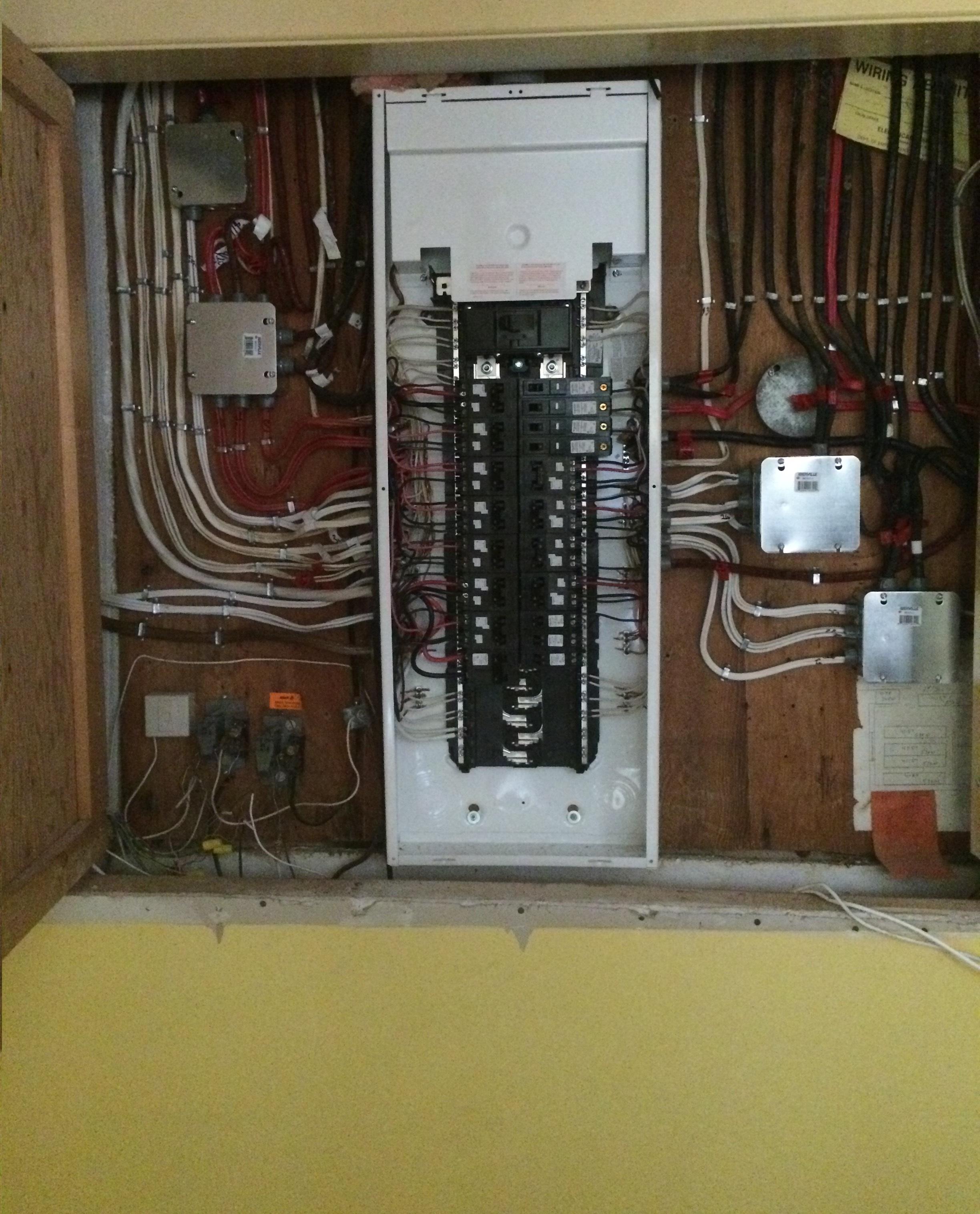Images

You may see a flyer like this one posted in your area as part of our current advertising campaign. Mention where you seen one and you'll receive a courtesy discount on any of the many electrical services we provide.

Keeping Circuit Breakers Neatly Organized will reduce or eliminate problems down the road during any future renovation as well as greatly aid proper panel labeling procedures.

There are several different types of pot lighting as well as various sizes. You need to select a different type typically depending on it's use and intended light output. These are "Insulated Housing" pot lights because they are on an exterior ceiling. Pot lights have grown drastically in popularity in recent years and can add just the right touch to any area.

Electrical wiring should be placed as close to the panel but as neat and straight as possible. Inside the panel wiring should be kept tidy and free of shavings or debris. Notice that in the case of a Sub Panel that the grounding wire is attached to the panel itself and not the neutral bar.

If you have single dwelling home then this is what the inside of your meter base should looks like. This specific example is a 200 Amp service. The meter base is installed during the rough in phase of construction and must be completed prior to putting in an application for a service inspection.

It's a sad fact but every year thousands of fires are started by electrical faults. This results in losses of person property, homes, and most importantly lives. To greatly reduce this risk new electrical codes have been put in place to require Arc Fault Protection on most household circuits which protect your home by stopping the flow of power in a fault situation. It may be a slight increase in cost, but thousands of fires a year is thousands too many.

Fuse Panels have already started to make their way out. With some insurance companies jumping on board and forcing you to change them out for circuit breaker panels the trend is catching on quickly. Fuse panels have several hazards that are reduced or eliminated by changing to a new model of panel, these include but are not limited to: nuisance tripping, replacing fuses, excessive heat, corrosion on the mounting side of fuses, arcing, and the need for frequent maintenance.

Aside from preparations for the panel change, typically within 24-48 hours you can enjoy the benefits of your new circuit breaker panel. For most fuse panel owners, this means you can finally stop going to the store and buying new fuses. But more than that, you can have the piece of mind of having a cleaner, safer electrical system under your roof.
Frequently Asked Questions
Which days is Allegiance Electrical Contracting open?
Open on Monday, Tuesday, Wednesday, Thursday, Friday.
What languages does Allegiance Electrical Contracting specialize in?
English.
What are Allegiance Electrical Contracting specialties?
Aluminum Electrical Wiring, Architecutral Lighting, Cabling, Electric Panel Installation, Electrical AMP Service, Electrical Cable Repair, Electrical Outlet Repair, Electrical Repair, Electrical Service Upgrade, Electrical Switch Repair.
What are Allegiance Electrical Contracting main products?
General Electrician, Exterior Lighting, Electrical Repair, Electrical Wiring, Generator Installation, Home Electrical Repair, Electric Panel Installation, Home Recessed Lighting, Electrical Service Upgrade, Generator Transfer Switch.
Attention business owner!
Register your business now and enhance your global reach with iGlobal.
Copied to clipboard!